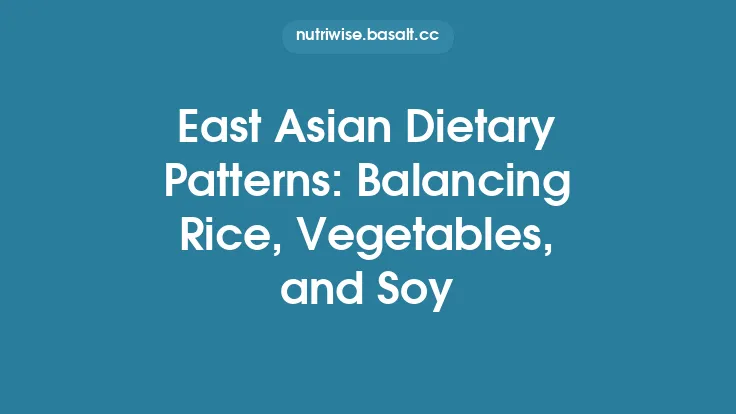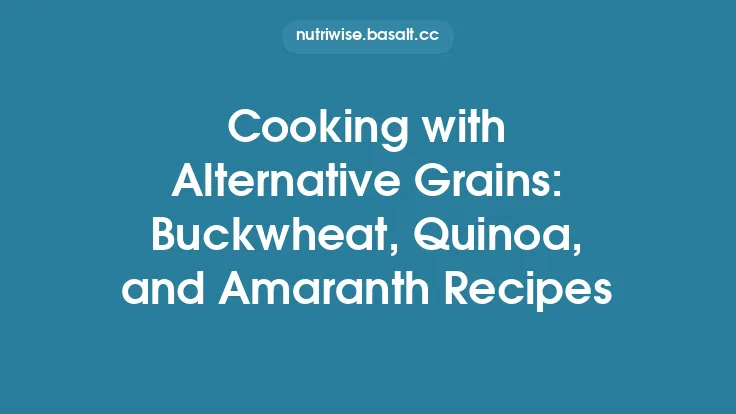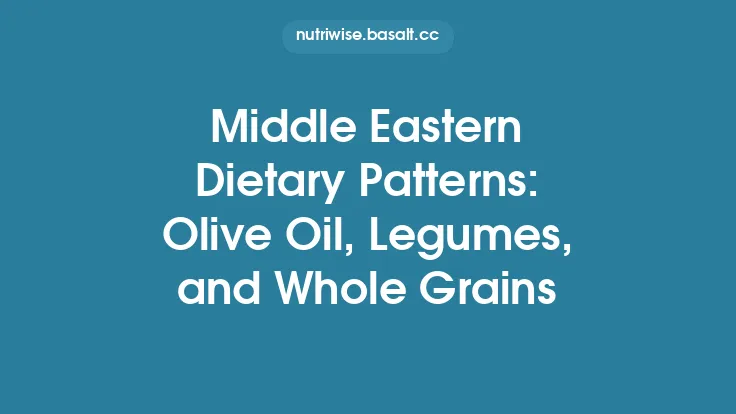The Pacific Islands encompass a vast expanse of oceanic territories, each with its own unique cultural heritage, yet they share a remarkably cohesive dietary foundation built around three cornerstone foods: fish, taro, and coconut. These ingredients have sustained island communities for centuries, providing not only caloric energy but also essential micronutrients, bioactive compounds, and cultural identity. This article explores the historical origins, agricultural practices, nutritional composition, culinary applications, and health implications of these three pillars, offering a comprehensive view of Pacific Islander dietary patterns.
Historical and Cultural Context
The settlement of the Pacific islands began around 3,500 years ago, when Austronesian voyagers navigated vast distances using sophisticated navigation techniques. Their diet was shaped by the resources available on remote atolls, volcanic islands, and coral reefs. Fish, abundant in surrounding waters, became the primary animal protein source. Taro (Colocasia esculenta) was introduced from Southeast Asia and quickly adapted to the humid, tropical soils, becoming a staple carbohydrate. Coconut palms (Cocos nucifera), native to the region, proliferated across coastlines, offering a versatile source of fat, water, and fiber.
These three foods are woven into myth, ritual, and daily life. In many island societies, communal fishing expeditions are accompanied by chants that invoke ancestral guardians. Taro planting ceremonies often involve offerings to land spirits, while the coconut tree is revered as a “tree of life,” symbolizing sustenance, shelter, and spiritual protection.
Agricultural and Harvesting Practices
Fishery Management
Traditional Pacific fisheries operate on a blend of customary marine tenure (known as *ra‘a in Polynesia, matai in Samoa) and seasonal closures. Community-enforced no-take periods align with spawning cycles of key species such as tuna (Thunnus spp.), mahi‑mahi (Coryphaena hippurus), and reef fish like snapper (Lutjanus* spp.). Handlines, spearfishing, and reef netting are common capture methods, each with distinct selectivity profiles that help maintain biodiversity.
Modern pressures—overfishing, climate‑induced coral bleaching, and invasive species—have prompted the integration of co‑management frameworks, marine protected areas, and aquaculture initiatives (e.g., seaweed and lagoon‑based tilapia farms) to sustain fish supplies.
Taro Cultivation
Taro thrives in wetland paddies, upland terraces, and even marginally saline soils. Traditional cultivation involves:
- Land Preparation – Swampy fields are cleared, and a thin layer of organic mulch (often coconut husk) is spread to retain moisture.
- Propagation – Suckers or corms are planted at 30‑45 cm intervals, allowing for optimal root expansion.
- Water Management – Controlled flooding maintains anaerobic conditions that suppress weeds and pests.
- Harvest – After 8‑12 months, mature corms are lifted, cleaned, and stored in cool, ventilated pits to prolong shelf life.
In recent decades, selective breeding programs have introduced taro varieties with improved disease resistance (e.g., against *Phytophthora* blight) and higher dry matter content, enhancing both yield and nutritional density.
Coconut Production
Coconut palms are cultivated in mixed agroforestry systems, often intercropped with banana, papaya, and root crops. Key agronomic practices include:
- Spacing – 7–9 m between trees to allow canopy development.
- Pruning – Removal of lower fronds to improve airflow and reduce pest incidence.
- Harvest Timing – Mature nuts are harvested 6–12 years after flowering; the timing influences oil composition (higher lauric acid in later harvests).
Sustainable harvesting also involves collecting fallen coconuts, which reduces labor and preserves tree health.
Nutritional Profile of the Core Foods
| Nutrient (per 100 g) | Fish (average, e.g., tuna) | Taro (raw) | Coconut (fresh meat) |
|---|---|---|---|
| Energy (kcal) | 130 | 142 | 354 |
| Protein (g) | 28 | 1.5 | 3.3 |
| Total Fat (g) | 1.0 | 0.2 | 33.5 |
| Saturated Fat (g) | 0.2 | 0.0 | 30.0 |
| Omega‑3 (EPA+DHA) (g) | 0.9 | 0.0 | 0.0 |
| Carbohydrates (g) | 0 | 34.6 | 15.2 |
| Dietary Fiber (g) | 0 | 5.1 | 9.0 |
| Vitamin C (mg) | 0 | 20.6 | 3.3 |
| Vitamin A (µg RAE) | 0 | 2 | 0 |
| Calcium (mg) | 10 | 32 | 14 |
| Iron (mg) | 1.0 | 0.5 | 2.4 |
| Potassium (mg) | 380 | 816 | 356 |
| Magnesium (mg) | 30 | 45 | 32 |
Key take‑aways:
- Fish supplies high‑quality protein and long‑chain omega‑3 fatty acids (EPA/DHA), essential for cardiovascular and neurocognitive health.
- Taro offers complex carbohydrates with a low glycemic index, substantial dietary fiber, and potassium, supporting sustained energy release and electrolyte balance.
- Coconut is a dense source of medium‑chain triglycerides (MCTs), particularly lauric acid, which exhibits antimicrobial properties and is readily oxidized for energy.
Culinary Traditions and Preparation Techniques
Fish
- Raw Preparations: *Poke (Hawaiian) and sashimi‑style* raw fish marinated in citrus, sea salt, and local herbs.
- Grilled/Barbecued: *Umu* (earth oven) cooking where fish is wrapped in banana leaves and slow‑cooked over hot stones, imparting smoky flavor.
- Fermented Products: *Kava (not a fish product but often paired) and fish sauce (e.g., piti* in Fiji) created through controlled fermentation, enhancing umami and preserving protein.
Taro
- Steamed Corms: *Poi* (Hawaiian) – a fermented paste of mashed taro, water, and occasional sweeteners, with a pH that gradually drops during fermentation, creating a probiotic‑rich staple.
- Fried Snacks: *Taro chips and taro fritters* (deep‑fried slices) are popular street foods, often seasoned with sea salt or local spices.
- Baked Dishes: *Taro pies and casseroles where grated taro is mixed with coconut milk, onions, and sometimes fish, then baked in a hangi* (earth oven).
Coconut
- Fresh Consumption: Coconut water is consumed directly as a hydrating beverage rich in electrolytes.
- Oil Extraction: Traditional cold‑press methods yield virgin coconut oil, used for cooking, skin care, and medicinal applications.
- Milk and Cream: Coconut milk is produced by grating the flesh, mixing with water, and straining; it serves as a base for soups, stews, and desserts.
- Desiccated Coconut: Sun‑drying or low‑heat dehydration creates a shelf‑stable product used in baking and confectionery.
Health Implications and Modern Research
Cardiovascular Health
- Omega‑3 Fatty Acids: Regular consumption of fatty fish (e.g., tuna, mahi‑mahi) has been linked to reduced triglyceride levels, lower blood pressure, and decreased incidence of arrhythmias. The anti‑inflammatory properties of EPA/DHA are mediated through the production of resolvins and protectins, which modulate endothelial function.
- MCTs from Coconut: Medium‑chain triglycerides are metabolized directly by the liver into ketone bodies, providing an alternative energy substrate that may improve lipid profiles in certain populations. However, the high saturated fat content warrants moderation, especially for individuals with hypercholesterolemia.
Metabolic Regulation
- Low Glycemic Index of Taro: The resistant starch present in taro resists rapid digestion, leading to a slower glucose release. This property can aid in glycemic control for people with type‑2 diabetes, as demonstrated in small clinical trials among Samoan participants.
- Fiber Content: Combined dietary fiber from taro and coconut supports gut microbiota diversity, promoting short‑chain fatty acid (SCFA) production (acetate, propionate, butyrate) that enhances colonic health and may influence satiety hormones (GLP‑1, PYY).
Micronutrient Sufficiency
- Potassium and Magnesium: High levels in taro and fish contribute to electrolyte balance, crucial for muscle function and blood pressure regulation.
- Iron Bioavailability: While fish provides heme iron, the presence of vitamin C from accompanying fruits (e.g., papaya, guava) enhances non‑heme iron absorption from taro.
Immunomodulatory Effects
- Lauric Acid: Exhibits antiviral and antibacterial activity by disrupting lipid membranes of pathogens, a property leveraged in traditional wound care using coconut oil.
- Fermented Products: The probiotic cultures in poi and fermented fish sauces can augment mucosal immunity, though more rigorous studies are needed to quantify these benefits.
Sustainability and Food Security
The triad of fish, taro, and coconut forms a resilient food system capable of withstanding climatic variability:
- Aquatic Resilience: Community‑based fishery management reduces overexploitation, while reef restoration projects (e.g., coral gardening) enhance habitat for fish stocks.
- Crop Diversity: Taro’s tolerance to waterlogged conditions makes it a reliable staple during periods of heavy rainfall, whereas its ability to grow in marginal soils provides a buffer against crop failure.
- Agroforestry Integration: Coconut palms contribute to carbon sequestration, soil stabilization, and provide shade for understory crops, fostering biodiversity.
Emerging initiatives—such as integrating taro into intercropping systems with nitrogen‑fixing legumes, and developing low‑impact fish aggregating devices (FADs)—aim to further strengthen food sovereignty while preserving cultural heritage.
Contemporary Adaptations and Global Influence
Pacific Islander diaspora communities have introduced these traditional foods to broader culinary scenes:
- Fusion Cuisine: Chefs in North America and Australia incorporate taro into gnocchi, coconut milk into curry bases, and raw fish into poke bowls, creating cross‑cultural dishes that retain authentic flavors.
- Functional Food Products: Commercially packaged taro flour, coconut MCT oil, and canned fish products are marketed for their health benefits, expanding accessibility beyond island borders.
- Research Partnerships: Universities in Hawaii, New Zealand, and Fiji collaborate on nutrigenomics studies to explore gene‑diet interactions specific to Pacific populations, informing personalized nutrition guidelines.
Practical Recommendations for Incorporating Pacific Islander Foods
- Balance Omega‑3 and Saturated Fat: Pair fish servings (2–3 times per week) with modest amounts of coconut oil (1–2 teaspoons per day) to harness benefits while limiting saturated fat intake.
- Utilize Taro as a Staple Carbohydrate: Replace refined grains with boiled or steamed taro in meals; aim for ½ cup cooked taro per serving to achieve a steady energy supply.
- Leverage Fermentation: Prepare small batches of poi or fermented fish sauce to introduce probiotic benefits; store in airtight containers at 4 °C for up to two weeks.
- Hydration with Coconut Water: Use fresh coconut water as a natural electrolyte drink post‑exercise, especially in hot climates.
- Mindful Portion Sizes: While nutrient‑dense, coconut meat is calorie‑dense; a typical serving is ¼ cup (≈30 g) of shredded coconut.
Conclusion
The dietary practices of Pacific Islander communities—centered on fish, taro, and coconut—represent a harmonious integration of marine and terrestrial resources, refined over millennia. Their combined nutritional strengths, cultural significance, and ecological sustainability offer valuable lessons for global nutrition and food security. By appreciating the scientific underpinnings of these traditional foods and supporting community‑led stewardship, we can honor a rich culinary heritage while promoting healthful, resilient diets for future generations.





